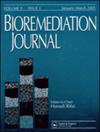制革废水中BOD5和COD的生物强化混合培养的选择和优化
IF 1.4
4区 环境科学与生态学
Q3 ENVIRONMENTAL SCIENCES
引用次数: 0
摘要
目前大多数处理制革废水的方法都不能成功地将污染物水平降低到符合现行环境标准的值,这意味着需要进行适当的优化。目前的工作评估了废水质量,以进一步了解其随时间的变化,同时考虑了常规参数和与制革厂废水具体相关的参数,如铬含量。分析的大多数流出物超过了现行国家立法规定的污染物限制,因此需要进行处理。为了提高处理效率,以化学需氧量(COD)和生化需氧量(BOD5)为指标,选择混合细菌培养物去除有机物(OM)的能力。所分析的四种菌株分别属于芽孢杆菌属、红球菌属和不动杆菌属,它们是从高有机负荷污水污染的沉积物中分离出来的。guillouiae不动杆菌SFC 500- 1a和toyonensis SFC 500-1E形成的天然联合体SFC 500-1对BOD5和COD的还原效果最好。选择其进行生物强化处理。发现溶解氧是还原的关键,并确定了处理不同COD值的废水所需的接种量。总之,这些结果证实了之前对这些废水的特征,这些特征应该始终是处理和管理策略的基础,也有助于优化一些操作参数,从而开发出有效和安全的处理技术。本文章由计算机程序翻译,如有差异,请以英文原文为准。
Selection and optimization of a mixed culture for bioaugmentation based on BOD5 and COD reduction in tannery effluents
Abstract Most current methodologies for the treatment of tannery effluents do not succeed in bringing contaminant levels down to values that fit environmental standards in force, which means there is a need for appropriate optimization. The present work assessed effluent quality to gain further insight into their variability across time, considering both conventional parameters and those specifically related to tannery effluents, such as chromium levels. Most of the effluents analyzed exceeded the contaminant limits established by current national legislation and therefore would require treatment. To improve treatment efficiency, a mixed bacterial culture was selected on the basis of its ability to remove organic matter (OM), measured in terms of chemical oxygen demand (COD) and biochemical oxygen demand (BOD5). The four strains analyzed, belonging to the genera Bacillus, Rhodococcus and Acinetobacter, were isolated from sediments contaminated with effluents with a high organic load. The native consortium SFC 500-1, formed by Acinetobacter guillouiae SFC 500-1 A and Bacillus toyonensis SFC 500-1E, proved to be the most effective at reducing BOD5 and COD. It was selected for bioaugmentation treatment. Dissolved oxygen was found to be key for reduction, and the inoculum size required to treat effluents with different COD values was also determined. All in all, the results confirmed previous characterization of these effluents, which should always be the basis for treatment and management strategies, and also contributed to optimizing some operational parameters so that effective and safe treatment technologies may be developed.
求助全文
通过发布文献求助,成功后即可免费获取论文全文。
去求助
来源期刊

Bioremediation Journal
ENVIRONMENTAL SCIENCES-
CiteScore
5.30
自引率
0.00%
发文量
36
审稿时长
9 months
期刊介绍:
Bioremediation Journal is a peer-reviewed quarterly that publishes current, original laboratory and field research in bioremediation, the use of biological and supporting physical treatments to treat contaminated soil and groundwater. The journal rapidly disseminates new information on emerging and maturing bioremediation technologies and integrates scientific research and engineering practices. The authors, editors, and readers are scientists, field engineers, site remediation managers, and regulatory experts from the academic, industrial, and government sectors worldwide.
High-quality, original articles make up the primary content. Other contributions are technical notes, short communications, and occasional invited review articles.
 求助内容:
求助内容: 应助结果提醒方式:
应助结果提醒方式:


